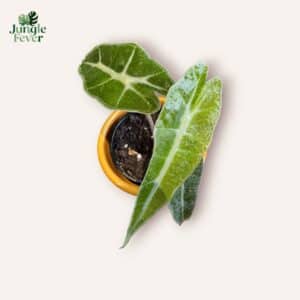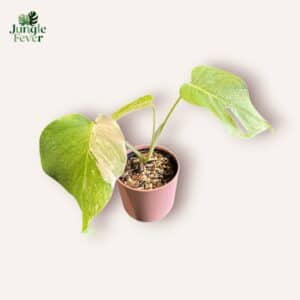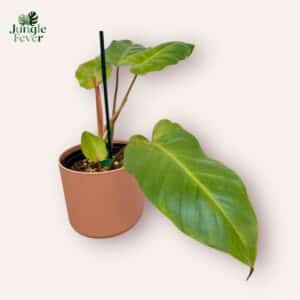ALOCASIA CARE GUIDE
🌿 Alocasia Plant Care Guide
Complete care tips for Alocasia Cuculatta, Alocasia Gageana, and other Alocasia species
Alocasias — often called “Elephant Ear” plants — are known for their bold, dramatic leaves that can be arrow-shaped, shield-like, or patterned with striking veins. Native to tropical Asia and Eastern Australia, they are statement plants that thrive when given warm, humid, and bright conditions.
Whether you have the classic Alocasia Cuculatta, the striped Alocasia zebrina, or a rare collector’s variety, this guide will help you keep your Alocasia healthy and thriving indoors.
☀️ Light Requirements for Alocasia
- Place your Alocasia in bright, indirect light.
- Too much direct sunlight can scorch delicate leaves, while too little light can cause leaf drop.
- They enjoy a few hours of soft morning sun but avoid harsh midday rays.
💡 Best practice: Position near an east-facing window or slightly back from a bright south/west-facing window with sheer curtains.
🌡️ Best Temperature for Alocasia
- Ideal range: 20–28°C (68–82°F).
- Avoid temperatures below 15°C (59°F) — Alocasias are sensitive to cold and may go dormant if chilled.
- Keep away from draughts, cold windows, and sudden temperature changes.
💧 How to Water an Alocasia Plant
- Keep the soil evenly moist during the growing season (spring–summer), but not waterlogged.
- Water when the top 2–3cm (1 inch) of soil feels dry.
- In autumn and winter, reduce watering as growth slows — some Alocasias naturally shed leaves or enter a light dormancy.
- Always use pots with drainage holes and empty excess water from saucers.
🚫 Avoid letting the soil fully dry out for long periods, as this can stress the plant and cause leaf loss.
🌬️ Humidity Needs for Alocasia
- Alocasias thrive in high humidity — ideally 60–80%.
- In dry homes, boost humidity by:
- Using a humidifier
- Grouping plants together
- Placing on a pebble tray with water
🍽️ Feeding Your Alocasia
- Feed every 2–4 weeks during the growing season with a balanced liquid fertiliser diluted to half strength.
- Stop feeding during dormancy or when growth slows in winter.
- Regular feeding encourages strong stems and vibrant leaf colour.
🪴 Additional Alocasia Care Tips
- Leaf changes are normal: Older leaves naturally yellow and die as new ones emerge.
- Pests: Keep an eye out for spider mites, aphids, and mealybugs — wipe leaves and treat early if spotted.
- Repotting: Every 1–2 years in spring, or when roots fill the pot. Use a loose, airy, and well-draining mix (equal parts potting mix, perlite, and orchid bark works well).
🌱 Common Alocasia Problems & Solutions
| Problem | Cause | Fix |
| Yellow leaves | Natural leaf cycle or overwatering | Remove old leaves, adjust watering |
| Brown edges | Low humidity or underwatering | Increase humidity, water consistently |
| Drooping leaves | Cold, thirst, or root stress | Warm up location, check moisture |
| Leaf spots | Over-misting or fungal infection | Reduce wetting leaves, improve airflow |
✅ Quick Alocasia Care Summary
- Light: Bright, indirect
- Water: Keep evenly moist; reduce in winter
- Temp: 20–28°C
- Humidity: 60–80% preferred
- Feed: Every 2–4 weeks in growing season
- Soil: Loose, airy, well-draining mix
💚 Final Note: Alocasias may be a little fussier than some tropicals, but when happy, they’ll reward you with stunning foliage that transforms your indoor jungle into something truly exotic.

 10% off on your first order when you use the voucher NEW10
10% off on your first order when you use the voucher NEW10





